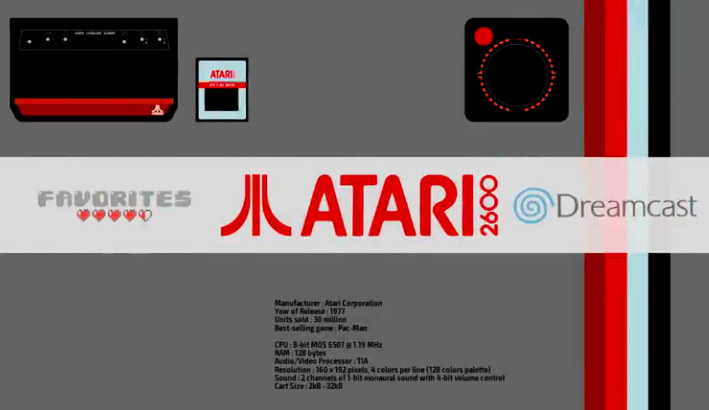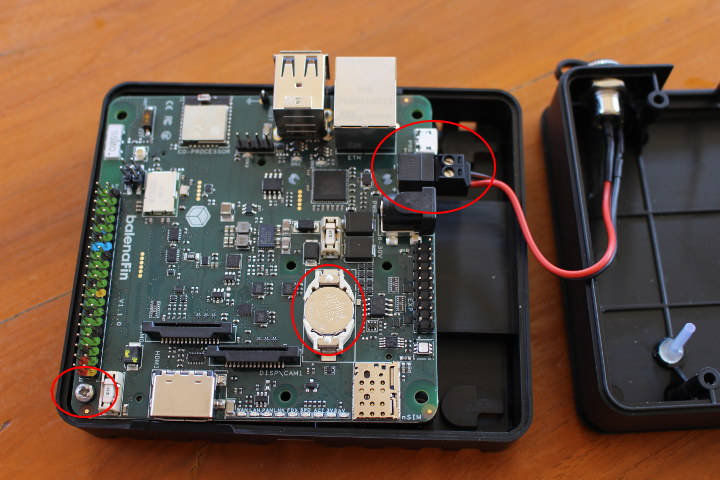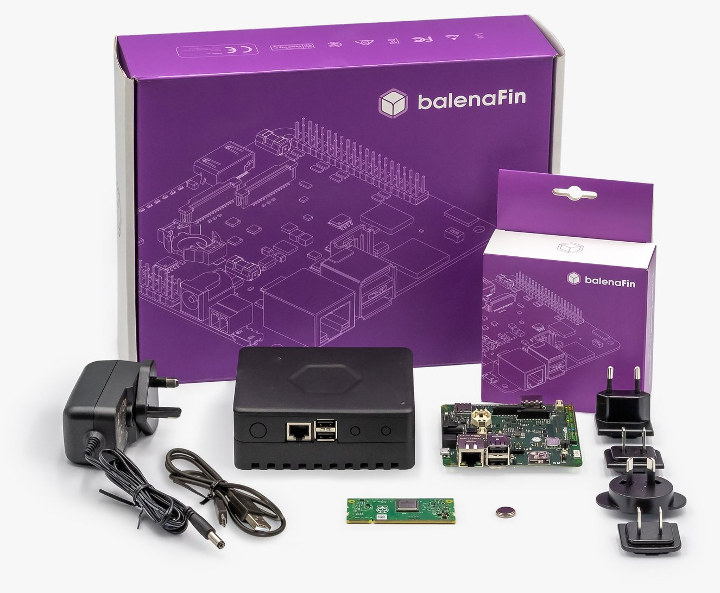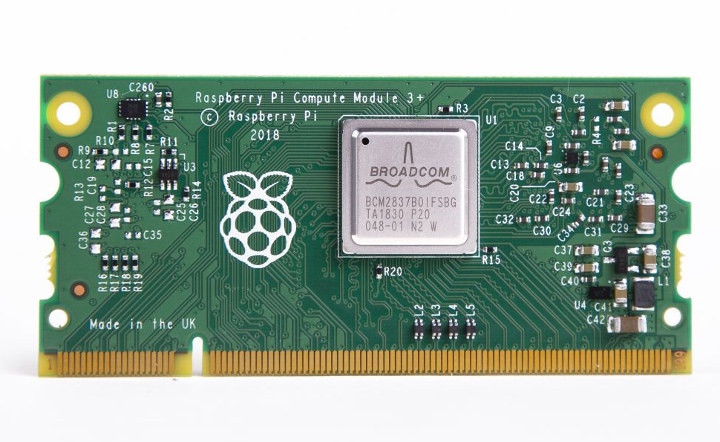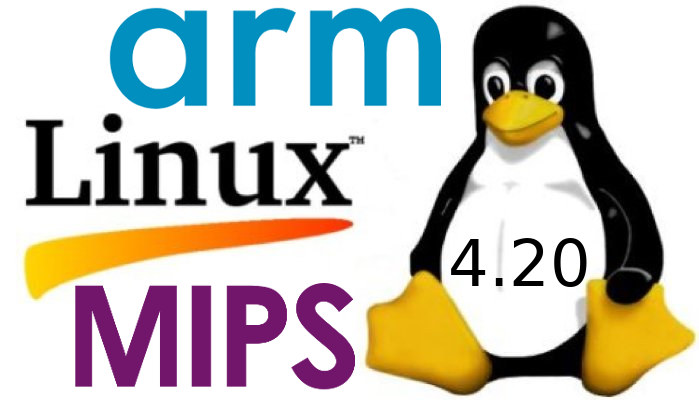There are already several ways to run retro games on development boards, with for example RetroPie, and derivatives like RetrOrangePi, Lakka and Recalbox. Batocera.Linux is another option that I had never heard about so far, and works on PCs, as well as Raspberry Pi and ODROID boards, with ODROID-N2 support having been added very recently. batocera.linux operating system can easily be run from a USB flash drive on your computer without altering your existing OS, while it will boot from a standard microSD card on Raspberry Pi and ODROID boards. Beside retro-gaming support, the OS also includes Kodi media center for playing videos, or listening to music. You may even play games in it since retro-gaming support was added in Kodi 18. The partial compatibility table above shows all platforms have a different level of support, and for Intel hardware support more emulators than Arm based boards. The Orange arrow […]
FOSSASIA 2019 Schedule – March 14-17
As its name implies, FOSSASIA is a Free and Open Source Software event taking place every year in Asia, more specifically in Singapore. I first discovered it last year, and published a virtual FOSSASIA 2018 schedule last year to give an idea about the subjects discussed at the event. It turns out FOSSASIA 2019 is coming really soon, as in tomorrow, so I’m a bit late, but I’ll still had a look at the schedule and made my own for the 4-day event. Thursday – March 14, 2019 10:05 – 10:25 – For Your Eyes Only: Betrusted & the Case for Trusted I/O by Bunnie Huang, CTO Chibitronics Security vulnerabilities are almost a fact of life. This is why system vendors are increasingly relying on physically separate chips to handle sensitive data. Unfortunately, private keys are not the same as your private matters. Exploits on your local device still have […]
balenaFin Developer Kit Review – Part 1: Unboxing and Assembly Instructions
Balena launched balenaFin 1.1 at the end of last month. The board is a professional carrier board for Raspberry Pi Compute Module 3 / 3+ Lite that includes support for variable voltage power input, optional PoE, industrial eMMC flash storage, a real-time Arm Cortex-M4 core via Artik-020 module, and more. Somehow a balenaFin 1.1 developer kit ended up in my home, and I’ll play with it in several weeks, but in the first part of the review, I’ll just check out the content of the package, and show how to assemble the kit. BalenaFin 1.1 Developer Kit Unboxing The local courier brought a largish balena Fin package. which contained a smaller balenaFin package, and the actual developer kit. Everything is nicely packaged in the box with the part related to power supply in a white box, a small opening for smaller accessories and Raspberry Pi Compute Module 3, as well […]
balenaFin Raspberry Pi CM3+/Lite Developer Kit Launched for $179 and Up
Balena.io – previously known as resin.io – first unveiled Resin.io Project Fin in March 2018. The carrier board for Raspberry Pi CM3L was designed with the aim of easing the management of fleets of connected devices thanks to ResinOS operating systems and the ability to deploy apps packaged in containers through their balenaCloud service. The project had been renamed to balenaFin a little while ago, and the company has now announced availability of balenaFin 1.1 developer kit with various improvements including support for PoE, dual camera, and Raspberry Pi CM3+/Lite module. balenaFin v1.1 carrier board specifications with improvements highlighted in bold: Supported SoM Raspberry Pi Compute Module 3 Lite with Broadcom BCM2837 quad-core ARM Cortex A53 processor at 1.2GHz, 1GB RAM Raspberry Pi Compute Module 3+/Lite with Broadcom BCM2837B0 quad-core ARM Cortex A53 processor at 1.2GHz, 1GB RAM Storage – 8, 16, 32, or 64 GB industrial grade eMMC 5.1 […]
You Can Now Run Windows 10 Home/Pro on Raspberry Pi 3
The Raspberry Pi 3 Model B/B+ SBC officially supports Windows 10 IoT, but if you ever wanted to run the full Windows 10, you’d be out of luck since Microsoft does not provide this option. However, there’s now an unofficial app called WoA Installer for Raspberry Pi 3 that can install Windows 10 Home / Professional Arm64 on your Raspberry Pi 3 B/B+ board. WoA stands for Windows on Arm, and the project is hosted on Github. All you need is a Windows 10 computer with .NET Framework 4.6.1, a class A1/A2 micro SD card, your RPi 3 board, and a Windows 10 ARM64 Image. The interesting part is that you apparently have to generate the .wim image through your web browser by going to https://uup.rg-adguard.net/ where you’ll be to select: Type – Windows (Final version), Windows (Insider version), Cumulative update for Windows 10 Version – Choice of x86 or […]
Raspberry Pi Compute Module 3+ Launched with Broadcom BCM2837B0 Processor, Up to 32GB Flash
Raspberry Pi 3 Compute Modules CM3 and CM3L launched about two years ago based on Broadcom BCM2837 quad core processor found in Raspberry Pi 3 board. Last year, the Raspberry Pi Foundation introduced Raspberry Pi 3B+ board with a slightly faster Broadcom BCM2837B0 processor, Gigabit Ethernet, and WiFi 802.11ac. So it would have made sense for the foundation to provide an upgrade to their CM3 compute modules with Broadcom BCM2837B0 processor, and that’s exactly what they’ve done with the launch of Raspberry Pi Compute Module 3+ for $25 and up. There are four variants of Raspberry Pi Compute Module 3+ with different storage options and sharing the following specifications: SoC – Broadcom BCM2837B0 quad core Cortex A53 processor @ 1.2 GHz with Videocore IV GPU System Memory – 1GB LPDDR2 SDRAM Storage CM3+/Lite – SD card signals through SO-DIMM connector CM3+/8GB – 8GB eMMC flash CM3+/16 GB – 16GB eMMC […]
FOSDEM 2019 Open Source Developers Meeting Schedule
FOSDEM – which stands for Free and Open Source Software Developers’ European Meeting – is a free-to-participate event where developers meet on the first week-end of February to discuss open source software & hardware projects. FOSDEM 2019 will take place on February 2 & 3, and the schedule has already been published with 671 speakers scheduled to speak in 711 events themselves sorted in 62 tracks. Like every year, I’ll create a virtual schedule based on some of the sessions most relevant to this blog in tracks such as open hardware, open media, RISC-V, and hardware enablement tracks. February 2 10:30 – 10:55 – VkRunner: a Vulkan shader test tool by Neil Roberts A presentation of VkRunner which is a tool to help test the compiler in your Vulkan driver using simple high-level scripts. Perhaps the largest part of developing a modern graphics driver revolves around getting the compiler to […]
Linux 4.20 Release – Main Changes, Arm and MIPS Architectures
After Greg K-H handling Linux 4.19 release, Linus Torvalds is back at the helm, and released Linux 4.20 just before Christmas: Let’s face it, last week wasn’t quite as quiet as I would have hoped for, but there really doesn’t seem to be any point to delay 4.20 because everybody is already taking a break. And it’s not like there are any known issues, it’s just that the shortlog below is a bit longer than I would have wished for. Nothing screams “oh, that’s scary”, though. And as part of the “everybody is already taking a break”, I can happily report that I already have quite a few early pull requests in my inbox. I encouraged people to get it over and done with, so that people can just relax over the year-end holidays. In fact, I probably won’t start pulling for a couple of days, but otherwise let’s just […]


